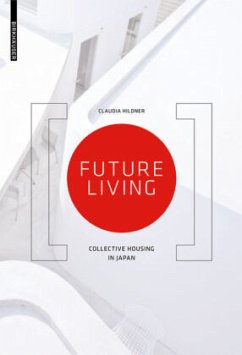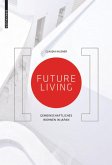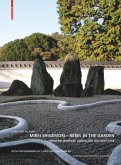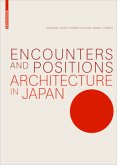Single-family houses are becoming increasingly outdated. They offer no response to demographic change or to the fact that there are fewer and fewer life-long relationships. They are often too inflexible for new family models or ways of cohabitation.
This publication presents projects in recent years in Japan, which respond to the need for new forms of housing. The architects are developing solutions that allow residents to live together but still maintain enough distance and privacy. The presented apartment types and their layout allow for a variety of life models. Particularly interesting here is the use of spaces that provide a gradual transition from public to private spaceâ??an approach to building that, according to experts, could revolutionize western residential architecture.
The publication portrays these new forms of building and living based on prominent Japanese examples that include Shigeru Ban, Sou Foujimoto, and Akihisa Hirata.
Einfamilienhäuser werden mehr und mehr unzeitgemäß. Sie bieten keine Antwort auf den demografischen Wandel, und die Tatsache, dass es immer weniger lebenslange Beziehungen gibt. Für neue Familienmodelle oder Formen des Zusammenlebens sind sie meist zu unflexibel.
Die Publikation stellt Projekte der letzten Jahre aus Japan vor, die auf die Frage nach neuen Wohnformen Antworten geben. Die Architekten entwickeln Lösungen, in denen die Bewohner zusammenleben, ohne sich zu viel Nähe aufzuzwingen. Die vorgestellten Wohnungstypen und ihre Anordnung erlauben vielfältige Lebensmodelle. Besonders spannend ist dabei der Umgang mit den Zwischenräumen, mit denen ein gradueller Übergang vom öffentlichen zum privaten Raum möglich wird - eine Art zu bauen, die nach Ansicht von Experten die westliche Wohnarchitektur revolutionieren könnte.
Die Publikation veranschaulicht diese neuen Formen des Bauens und Wohnens an herausragenden japanischen Beispielen, unter anderem von Shigeru Ban, Sou Foujimoto oder Akihisa Hirata.
Hinweis: Dieser Artikel kann nur an eine deutsche Lieferadresse ausgeliefert werden.
This publication presents projects in recent years in Japan, which respond to the need for new forms of housing. The architects are developing solutions that allow residents to live together but still maintain enough distance and privacy. The presented apartment types and their layout allow for a variety of life models. Particularly interesting here is the use of spaces that provide a gradual transition from public to private spaceâ??an approach to building that, according to experts, could revolutionize western residential architecture.
The publication portrays these new forms of building and living based on prominent Japanese examples that include Shigeru Ban, Sou Foujimoto, and Akihisa Hirata.
Einfamilienhäuser werden mehr und mehr unzeitgemäß. Sie bieten keine Antwort auf den demografischen Wandel, und die Tatsache, dass es immer weniger lebenslange Beziehungen gibt. Für neue Familienmodelle oder Formen des Zusammenlebens sind sie meist zu unflexibel.
Die Publikation stellt Projekte der letzten Jahre aus Japan vor, die auf die Frage nach neuen Wohnformen Antworten geben. Die Architekten entwickeln Lösungen, in denen die Bewohner zusammenleben, ohne sich zu viel Nähe aufzuzwingen. Die vorgestellten Wohnungstypen und ihre Anordnung erlauben vielfältige Lebensmodelle. Besonders spannend ist dabei der Umgang mit den Zwischenräumen, mit denen ein gradueller Übergang vom öffentlichen zum privaten Raum möglich wird - eine Art zu bauen, die nach Ansicht von Experten die westliche Wohnarchitektur revolutionieren könnte.
Die Publikation veranschaulicht diese neuen Formen des Bauens und Wohnens an herausragenden japanischen Beispielen, unter anderem von Shigeru Ban, Sou Foujimoto oder Akihisa Hirata.
Hinweis: Dieser Artikel kann nur an eine deutsche Lieferadresse ausgeliefert werden.








